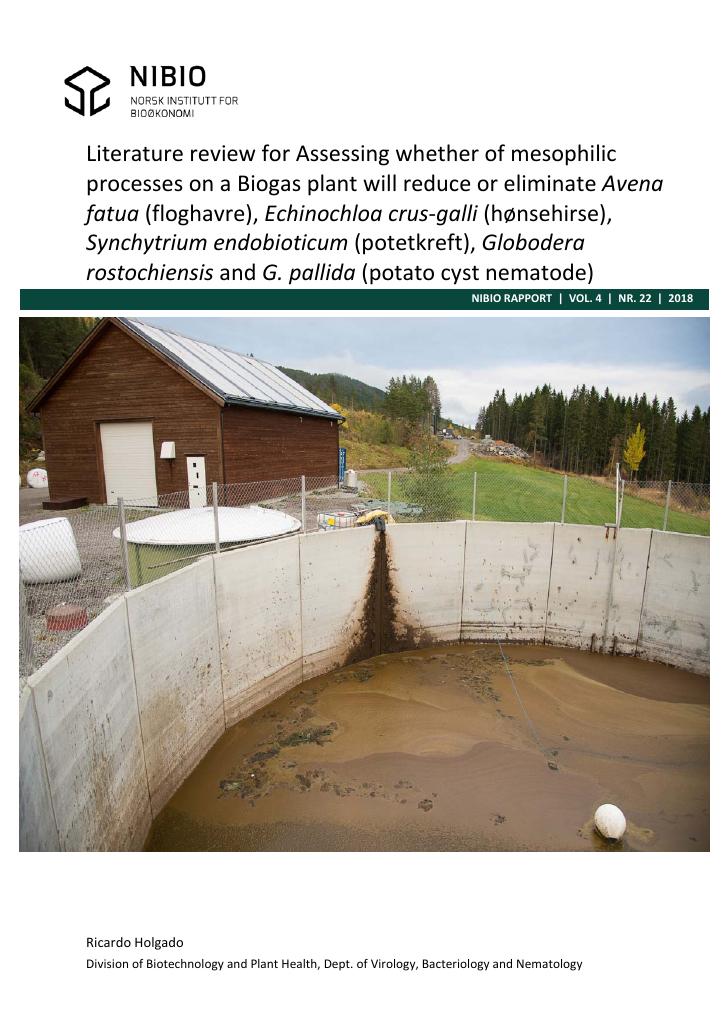Kunnskapsoppsummering
Literature review for assessing whether os Mesophilic Processes on a Biogas Plant will reduce or eliminate Avena fatua (Floghavre), Echinochloa Crus-Galli (Hønsehirse), Synchytrium endobioticum (Potetkreft), Globodera rostochiensis and G. pallida (Potato Cyst Nematode).
An increase in organic production of organic waste is expected during the next years, one of the raw materials expected to be used is livestock manure. A NIBIO report from 2017 outlines a future combination of farm / local treatment facilities and major central plants (Pettersen, et al 2017). Biogas plants can be operated in different ways. Among other things, the temperature in the treatment tank varies. Biogas plants in Norway have around 37 ◦C in the processing tank (mesophilic proses), and approx. 55 ◦C in the processing tank (thermophilic eradication (Avfall Norge, 2010). A mesophilic process may probably affect the survival of organisms, due to temperature, toxic gases, residence time, etc. The Norwegian Food Safety Authority therefore wishes an assessment of how this mesophilic treatment can affect the survival of the harmful organisms and in particular is essential to prevent the spreading of quarantine organisms.
Publisert
Eier
NIBIO - Norsk institutt for bioøkonomi
Mottaker
Mattilsynet
Forfatter
Richardo Holgado
Språk
norsk (bokmål)
Kilde
ISBN
9788217020479
